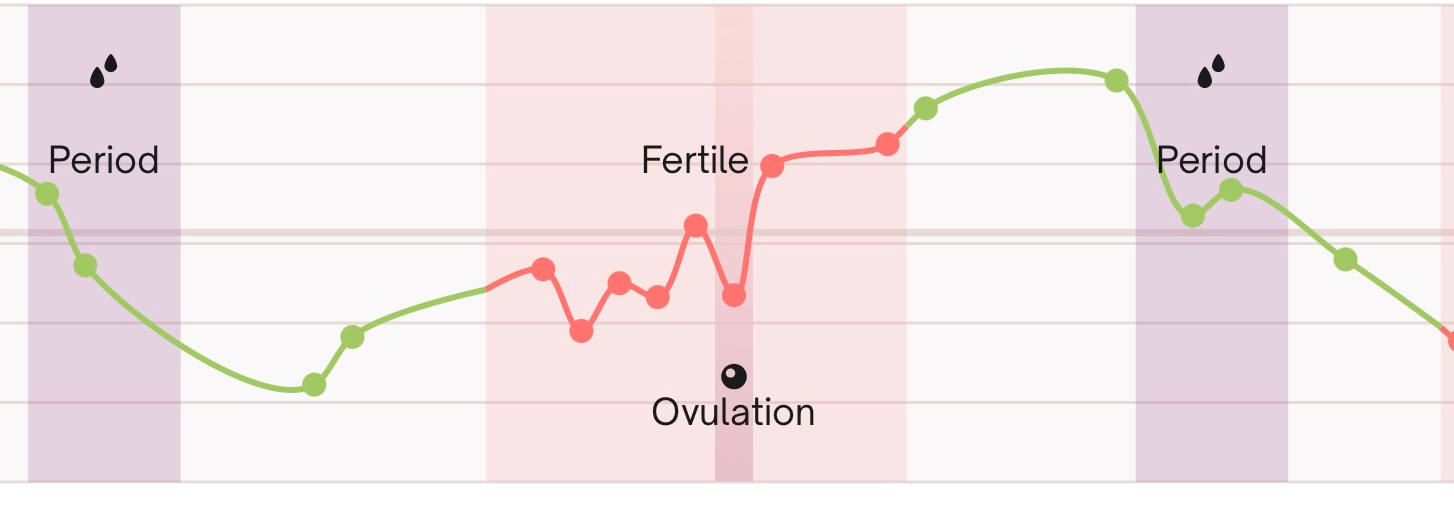What Does It Take to Make Wearable Devices Continuously Wearable
24/7 use of wearables have unlocked key women’s health insights—solving pain points preventing continuous wear will enhance health tracking for women & improve usability for all users!
As we invest more in women’s health research, we're discovering new ways to empower women with insights from their own bodies, enabling informed health decisions.
Advancements in Menstrual Cycle Tracking
We’ve moved beyond simply logging menstruation dates in apps to leveraging wearables—like watches, rings, and bands—that measure basal body temperature (or body temp, a related metric). This data helps us better understand ovulation and menstrual cycle patterns.
Popular period tracking apps: Natural Cycles, Clue, Flo
Leading wearable devices: Oura, Whoop, Apple Watch, Garmin, Samsung Galaxy Ring
🌟 ‼️ Recently, WHOOP released a groundbreaking study showing cardiovascular biomarkers can non-invasively estimate hormonal levels in women. This is significant! Until now, hormonal measurements relied on invasive blood or urine tests that provide only momentary snapshots of hormone levels.👏🏽 👏🏽 WHOOP has also committed to advancing women’s health research to refine its products for female users. For more details, check out this FemTech article: “WHOOP Unveils Novel Digital Biomarker for Menstrual Cycle Monitoring in Nature Study.”
This is just the beginning of using existing biomarkers to understand, predict, and even prevent various women’s health issues.
Current Challenges with Wearables
WHOOP highlighted a critical factor: “This study was made possible by our always-on data and global scale,” Ahmed notes. “It utilized over 1 million days of WHOOP data, enabling insights that aren’t feasible without a 24/7 wearable.”
Achieving continuous insights requires more women to wear devices 24/7. From a product perspective, wearable companies must deeply understand why some women stop wearing their devices, including:
From a product perspective, this requires that these wearable teams have a strong understanding of their female user base wearing their devices.
And there are a few reasons why women won’t wear their rings continuously:
Battery - many wearables have unique chargers, so forgetting one can mean a dead device…
Battery life: My Gen 3 Oura ring lasts four days, a big improvement over Gen 2, but charging once a week—or better yet, monthly—would be ideal.
Uncommon Charging Port: Devices requiring proprietary chargers are inconvenient. Universal options like USB-C would make charging easier while traveling or at work.
Comfort and style:
Working out: Many users remove rings during weightlifting to avoid discomfort or scratches.
Style: Some prefer not to wear devices at fancy events, as they don’t always match formal attire.
Swelling & size: Pregnant women may experience swelling, making non-adjustable rings difficult to wear.
Syncing:
Storage: Wearables like Oura and Whoop store between 7-14 days of data. Users need to sync their data with the app ideally everyday, or at least once in the 7-14 day cycle before the data is erased. Forgetting to sync or wear a device creates gaps in data, which impacts insights.
💡 Although skipping a day or two without wearing my ring might not seem significant, I want to share an instance when I regretted missing a few days of Oura data. I forgot my Oura ring charger during vacation—right in my ovulation window. Since wearables currently confirm ovulation retrospectively via basal body temperature, I ended up with a gap in my data. These lapses limit the accuracy of future predictions and insights.
Note: Most menstrual tracking apps and wearable devices confirm ovulation by detecting a rise in basal body temperature. Specifically, wearable devices currently use this temperature increase to retroactively confirm that ovulation has occurred. See my chart below:
The Future of Wearables in Women’s Health
While wearables remain a luxury item, companies that address usability and affordability will dominate the market, enabling continuous use and larger datasets for more accurate predictions.
Solutions I’d love to see:
Longer battery life
Universal charging options (e.g., USB-C)
Comfortable designs for workouts
Durable materials for weightlifting
Adjustable sizing options for swollen fingers (pregnancy or hiking)
Sleeker, more stylish designs
Good solutions for these female specific challenges ultimately benefit all users.
24/7 use of wearables have unlocked key women’s health insights—solving pain points preventing continuous wear will enhance health tracking for women & improve usability for all users.
I’m excited to see what’s next and to learn more at: “A Wearable Revolution: The Next Chapter in Women's Health Tech in 2025”







You are articulating many different points in play - women's health, your personal experience with wearables, how a wearable should be, and work from a product development perspective. Wearable devices are here to stay. In my opinion there would be convergence of technologies in such devices as we move forward.